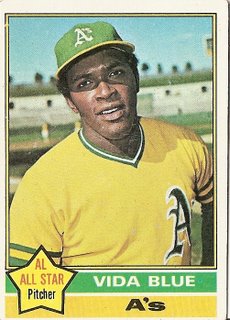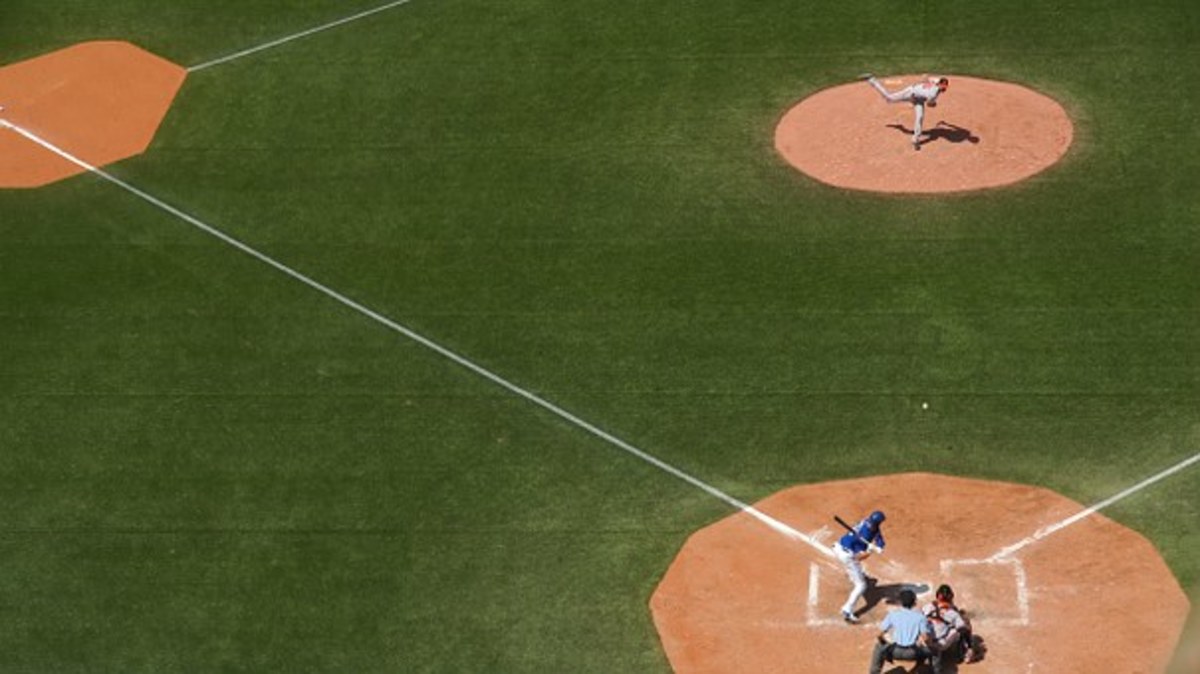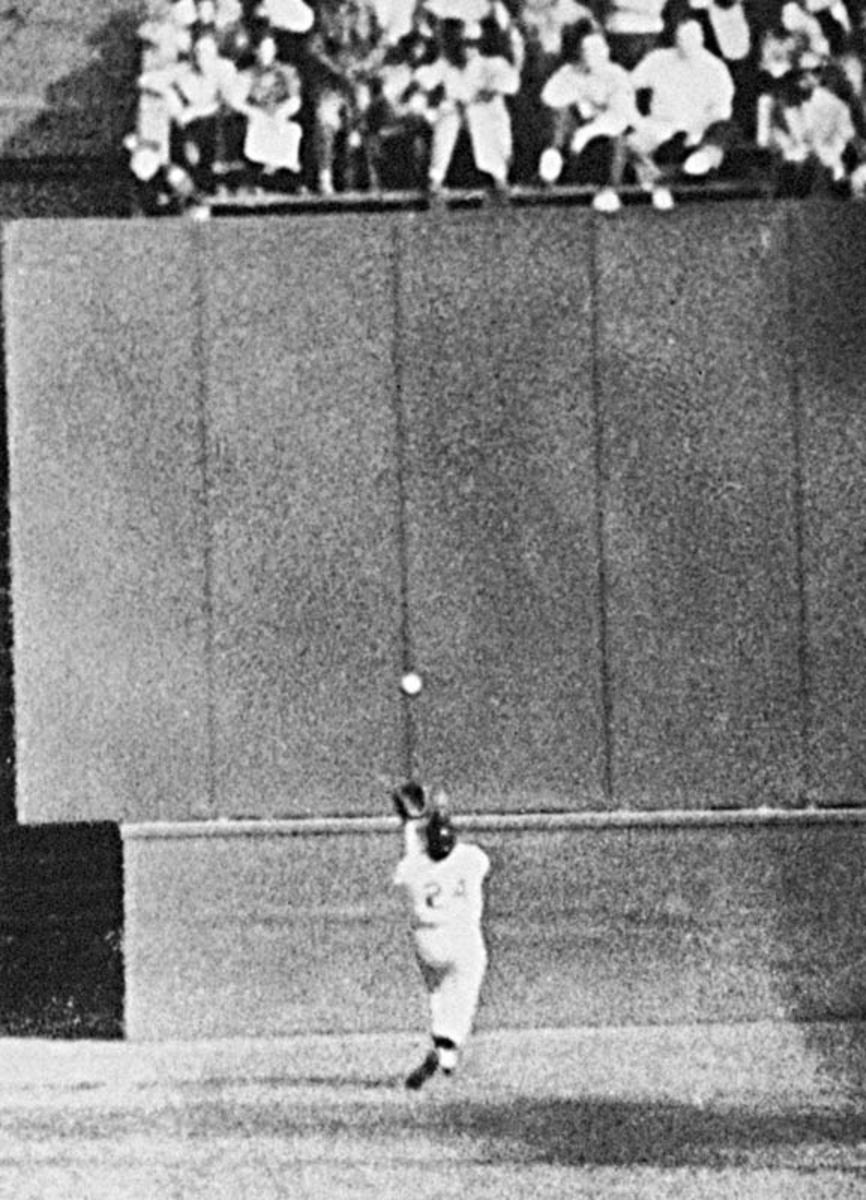A displaced Tiger fan gets a west coast lesson on baseball
Major leaguer reminds us of what baseball used to be
Hastily, I searched for a properly fitting batting helmet in the dugout of the pristine baseball palace known as AT&T Park, the current home of the San Francisco Giants. I was there for a fantasy batting camp and the man on the mound was growing impatient with me.
"I need a batter up here!" barked the pitcher, clad in his San Francisco Giants uniform, his shaven head sweating from having thrown to string of other amateurs before me.
I was nervous enough without the added pressure of his taunts, so my heart sunk when I stepped into the batter's box and heard him comment beneath his breath about the jersey I had decided to wear that day.
"Detroit Tigers?" he said incredulously as he stepped to the rubber. "You're killing me!"
It was then that I knew I faced a daunting task. It's bad enough that I hadn't even swung a bat since playing in the Manistee men's softball league years earlier and hadn't seen a pitched hardball since I played for my suburban Detroit high school baseball team 20 years ago. Now I had agitated the man who held my fate in his hands.
This was no ordinary pitcher I was facing, either. Sure, he was nearly sixty years old, but he still looked like he could step into the bullpen later that day for the Giant's evening game against the Marlins and give Barry Zito a run for his record $126 million salary.
You see, the man staring me down at the plate was legendary major leaguer Vida Blue, winner of the Cy Young and MVP awards in 1971 and starting pitcher in two All-Star games - once in the American League and another time in the National League. He was so respected as a player that they allowed him to be the first player to wear his given name on his back instead of his last.
Why hadn't I worn a Giants jersey instead that day? In my haste to represent my home town I had put myself in a potentially embarrassing situation.
As I dug in, my knees shaking, I wondered what resentment he could possibly have against Detroit. Did Vida still harbor a grudge against the Tigers for a hard fought American League Championship Series back in 1972 when he played for the Oakland A's? Or maybe he was still irked by the 2006 re-match of these two teams for the ALCS in 2006 when Detroit blanked the A's four games to zip in their magical advance to the World Series against the St. Louis Cardinals.
Back during Blue's time, Detroit's roster read like an All-Star game lineup: Kaline, Lolich, Freehan, Cash, McAuliffe, Rodriguez, McClain, Horton. Many of these guys had gone to the big show back in '68 to beat St. Louis and win the World Series. 1968, incidentally, was the same year the A's moved from Kansas City to the West Coast and settled into the other city by the Bay ¬- Oakland.
A couple of years later they signed rookie left hander Vida Blue to a contract of $14,000 per year. Back then, the minimum salary was $10,000 - about $380,000 shy of what it is today. And as Vida tells it, after he went 13-2 to start his third season, fans were outraged that he was paid barely above that minimum. So, the A's owner sweetened the deal by publicly giving Blue a brand new Cadillac. (Vida says he would have preferred a BMW.)
In '72, unlike 1968, it just wasn't meant to be for Detroit, though, as Blue and the rest of the A's - including players like the future "Mr. October" Reggie Jackson, and pitchers "Catfish" Hunter (21 wins), Rollie Fingers, John "Blue Moon" Odom, and Ken Holtzman (19 wins) - beat the Tigers in a nail-biter three games to two to advance to the World Series against future Tiger manager Sparky Anderson's "Big Red Machine" in Cincinnati, led by should be hall of famer Pete Rose and the rest of that team's All-Star cast. The series went 7 games with Oakland becoming the eventual champion, ending a 41-year World Series drought for the Athletics.
Whether he had forgotten those days or not, the man who some baseball historians call "the hardest throwing lefty ever" persisted in showing me no mercy at the plate, throwing a steady diet of fastballs of which I only got a solid piece of one, fouling off two more. I did manage to hit two hard grounders off a couple of knuckle balls he served up, but he knew enough to throw them short so that any decent infielder would have been able to gobble them up and gun me out easily at first. I can only be thankful that he didn't throw me his famous curveball, the same looping pitch that took down so many big league hitters during his years in Oakland, San Francisco, and Kansas City.
Oh, yeah...the guy can still hit too, by the way.
Before he pitched us batting practice, Vida spent the first hour and a half of fantasy camp with the fungo bat hitting us fly balls into the outfield, first making me run to the left, then to the right, then in for a little blooper, then back again and again against the wall or on the warning track, dressing me down after each catch or miss.
Despite receiving a major league hazing that day, the experience gave me pause. Here was a guy who played during the golden years of baseball, before salaries spiraled out of control, "before managers cared about the arms of their pitchers," as Blue told us.
"We didn't ever have pitch counts," he explained. "I never even heard of a pitch count. I'd pitch eight or nine innings, throwing 150, 160 pitches. Maybe if starting pitchers today threw more than 100 pitches per game," he said, pointing to his head in a "think on this" gesture, "they would have stronger arms."
Truly, Vida came from a generation of players far removed from today's overpaid prima donnas. Despite this, he's unjaded, doing baseball fantasy camps and promoting the sport in both a Giants and A's uniform, going across the Bay Bridge and back to speak the golden gospel of baseball to fans and players young and old.
For me, it was the experience of a lifetime to meet a baseball icon I'd previously known only from the statistics I read off the back of the faded Topps baseball cards I kept in a shoebox under my bed back in the ‘70s. Seeing the man live and in action was a renewal of a fond memory of a time when professional baseball was more pure, more fun...and still held me awestruck at the beauty of America's pastime - a game played by heroes and enjoyed by devotees.
Cean Burgeson can be reached at: ceanburgeson@gmail.com






